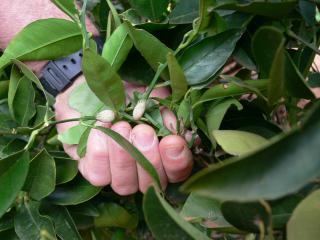Perth gardeners are urged to inspect their citrus trees for lumps and bumps that could indicate an infestation of citrus gall wasp and act now to control it.
Now is the time to control the pest as adult wasps emerge from infested gall nests over a protracted period through to November.
The Department of Primary Industries and Regional Development confirmed the pest wasp was first discovered in Perth in 2013 and has since been reported in as many as 50 suburbs.
Populations are mainly concentrated in the north-eastern suburbs including the Town of Bassendean, and Cities of Bayswater, Swan, Stirling and Vincent.
The wasp has also been reported further afield, having spread among neighbouring properties and transported in young infested trees to new locations.
Damage caused by the wasp can be severe, sometimes rendering mature trees unproductive and deforming or killing newly planted trees.
The wasp attacks all citrus types including mandarins, oranges, grapefruit, cumquats, lemons and limes, including the popular native limes. It forms distinctive gall nests on stems which look like woody bulges up to 250 mm long and 25 mm thick.
WA Citrus Biosecurity Representative Helen Newman said backyard growers could assist in protecting the State’s citrus industry by taking action to control citrus gall wasp and prevent its spread.
“Each gall contains hundreds of larvae which emerge as tiny black wasps during Spring from October to November,” Ms Newman said.
“Home gardeners can take steps to prune all visible galls off the tree as soon as possible and solarise the pruned stems by placing them in a black plastic bag (double bagging is best) and baking in the sun for four weeks.
“Another option is to shred the pruned stems using the fine setting on a mulcher or a pair of secateurs, or by burning or deep-burying to one meter.”
Further information on citrus gall wasp is available on the Department of Primary Industries and Regional Development website.
Anyone finding citrus gall wasp can report in using the department’s MyPestGuide Reporter app or to the Pest and Disease Information Service on (08) 9368 3080, padis@dpird.wa.gov.au
Media contacts: Jodie Thomson/Lisa Bertram, media liaison +61 (0)8 9368 3937

